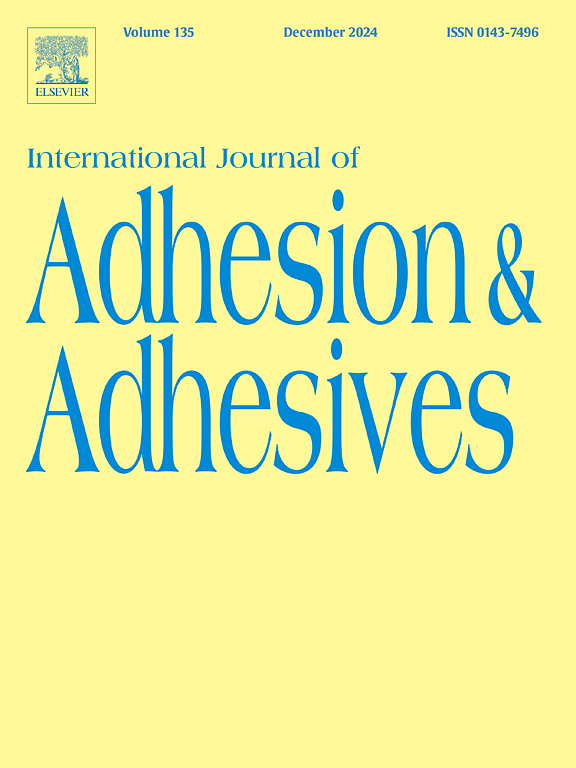Evaluation of the optimal phytosphingosine pretreatment time for enhancing the resin dentin interface
IF 3.5
3区 材料科学
Q2 ENGINEERING, CHEMICAL
International Journal of Adhesion and Adhesives
Pub Date : 2025-07-17
DOI:10.1016/j.ijadhadh.2025.104104
引用次数: 0
Abstract
This study comparatively evaluates the effect of dentin pretreatment with 6.5 % proanthocyanidin and 6.5 % phytosphingosine at two different time intervals using micro-shear bond strength and contact angle analyses. A total of 120 coronal dentin samples was sectioned and subjected to artificial cariogenic solution for 2 weeks. 60 samples were further divided based on the pretreatment agents (6.5 % PAC and 6.5 % PHS) into 2 groups (n = 24) and control (n = 12). Based on the pretreatment application time, the samples were further subdivided into subgroup A – 30s, B – 60s. Micro shear bond strength was analysed using universal testing machine and contact angle was evaluated using goniometer. The mode of failure was determined under a stereomicroscope. Data was tabulated and statistically analysed using Welch's ANOVA and Multiple comparison of groups was done using Games Howell test. Pretreatment using PHS on demineralized dentin at 30s showed the highest shear bond strength followed by PAC and control group. At 30s and 60s, PHS and PAC when compared to the control group showed a highly significant difference in-terms of micro-shear bond strength and contact angle analysis (p < 0.05). Therefore, PHS shows an improved bond strength of carious dentin to the resin interface and hence can be considered as a promising alternative collagen crosslinking agent to PAC.

植鞘苷增强树脂牙本质界面最佳预处理时间的评价
通过微剪切结合强度和接触角分析,比较了6.5%原花青素和6.5%植鞘苷在不同时间间隔下预处理牙本质的效果。将120个冠状牙本质标本切片,用人工蛀牙液浸泡2周。将60份样品按预处理剂(6.5% PAC和6.5% PHS)分为2组(n = 24)和对照组(n = 12)。根据预处理时间将样品进一步细分为A - 30s、B - 60s亚组。用万能试验机分析微剪切粘接强度,用测角仪测定接触角。在体视显微镜下确定了失效模式。数据采用Welch’s ANOVA进行统计分析,组间多重比较采用Games Howell检验。PHS预处理30s后牙本质剪切结合强度最高,其次为PAC和对照组。在30岁和60岁时,PHS和PAC与对照组相比,在微剪切结合强度和接触角分析方面存在高度显著差异(p <;0.05)。因此,PHS具有较好的牙本质与树脂界面的结合强度,是一种很有前景的替代PAC的胶原交联剂。
本文章由计算机程序翻译,如有差异,请以英文原文为准。
求助全文
约1分钟内获得全文
求助全文
来源期刊

International Journal of Adhesion and Adhesives
工程技术-材料科学:综合
CiteScore
6.90
自引率
8.80%
发文量
200
审稿时长
8.3 months
期刊介绍:
The International Journal of Adhesion and Adhesives draws together the many aspects of the science and technology of adhesive materials, from fundamental research and development work to industrial applications. Subject areas covered include: interfacial interactions, surface chemistry, methods of testing, accumulation of test data on physical and mechanical properties, environmental effects, new adhesive materials, sealants, design of bonded joints, and manufacturing technology.
 求助内容:
求助内容: 应助结果提醒方式:
应助结果提醒方式:


